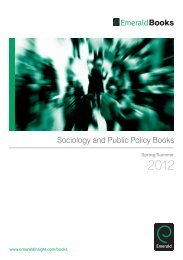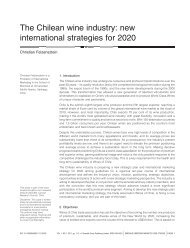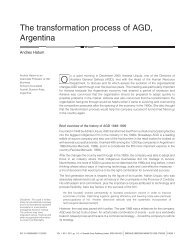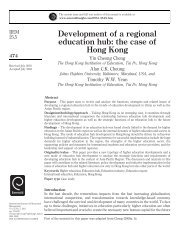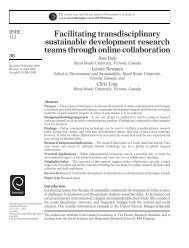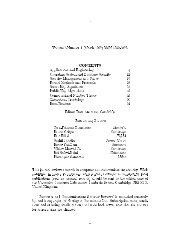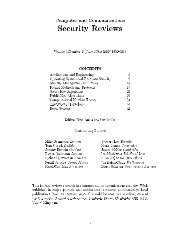CONTENTS - Emerald
CONTENTS - Emerald
CONTENTS - Emerald
Create successful ePaper yourself
Turn your PDF publications into a flip-book with our unique Google optimized e-Paper software.
7 Computational Number Theory<br />
041701 `The Rabin-Miller primality test: composite numbers which pass<br />
it'<br />
F Arnault, Mathematics of Computation v 64 no 209 (Jan 95) pp 355{361<br />
The author provides a new technique, based on biquadratic reciprocity, for generating<br />
strong pseudoprimes with respect to a given set of bases. He exhibits an integer<br />
which is a strong pseudoprime with respect to the rst forty six prime numbers.<br />
041702 `The Magic Words Are Squeamish Ossifrage'<br />
DAtkins, M Gra , AK Lenstra, PC Leyland, Asiacrypt 94 pp 219{229<br />
The authors describe how they factored the 129-digit RSA challenge which was<br />
published in 1977 in Scienti c American. They used the double large prime variation<br />
of the multiple polynomial quadratic sieve value, and were assisted by the spare cycles<br />
of 1600 machines on the Internet. It was discovered that the results of the computation<br />
can be approximated by a quartic function of the number of relations received, rather<br />
than as a quadratic function as expected. They conclude that 512-bit RSA moduli are<br />
vulnerable to any organisation willing to spend a few million dollars and wait a few<br />
months.<br />
041703 `On the squared unsymmetric Lanczos method'<br />
AT Chronopoulos, Journal of Computational and Applied Mathematics v 54 (94) pp<br />
65{78<br />
The author discusses an optimisation of the Lanczos method for nding eigenvalues<br />
of nonsymmetric matrices. Tests on a system of 40,000 equations show it to be<br />
competitive and economical of memory.<br />
041704 `Small Zeros of Quadratic Congruences modulo pq, II'<br />
TCochrane, Journal of Number Theoryv50no2(Feb 95) pp 299{308<br />
For n 4, the quadratic congruence Q(x1;x2; :::; xn) 0 (mod pq) has a nonzero<br />
solution with maxjxij<br />
p pq, and this is the best possible such result.<br />
041705 `Computing (x), M(x) and (x)'<br />
M Deleglise, J Rivat, ANTS 94 p 264<br />
The authors report a slight improvement inthe Lagarias-Miller-Odlyzko method<br />
for calculating (x) | their variant runs a multiple of O(log x) faster at the cost of a<br />
similar increase in memory size.<br />
041706 `On Orders of Optimal Normal Basis Generators'<br />
SH Gao, SA Vanstone, ANTS 94 p 220<br />
The authors did a numerical investigation of a large number of optimal normal<br />
bases for elds of characteristic 2. Where is primitive and = + ,1 generates<br />
the basis, e can be computed in O(n:w(e)) operations, where w(e) is the Hamming<br />
weight of e. If were an arbitrary value, the cost would be O(n log n log log n log e)<br />
computations.<br />
041707 `The complexity of greatest common divisor computations'<br />
BS Majewski, G Havas, ANTS 94 pp 184{193<br />
The authors consider the complexity of expressing the GCD of n>2numbers as<br />
a linear combination of them, and shows that this problem is NP-complete. However,<br />
the largest multiplier cannot exceed half the largest input number.<br />
041708 `Parallel decomposition of modular exponentiation for RSA cryptosystem'<br />
S Shimonaka, N Takeda, H Nagase, ISITA 94 pp 269{271<br />
The authors propose calculating M e by decomposing M into factors and raising<br />
43



